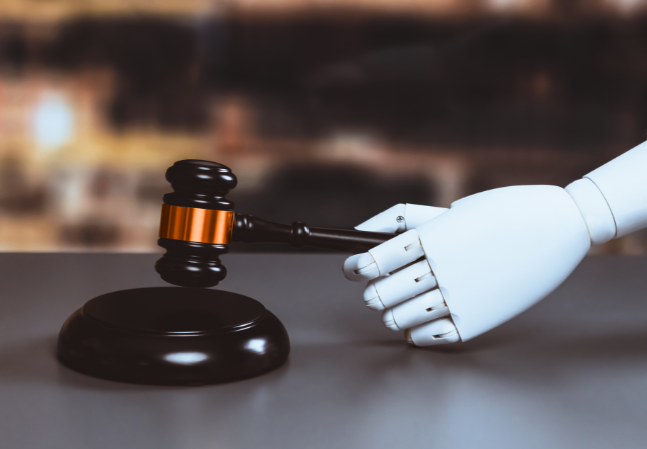Welcome! Save 30% on all CLE, CPE, and Professional Skills webinars, plus 15% off any annual pass with code HOLIDAY25
About the Course
Introduction
This CLE course will guide counsel on handling divided infringement claims when enforcing patent rights. The panel will review recent court decisions and outline steps to protect IP rights and allocate liability in the event of an infringement.
Description
The Federal Circuit's decision in Eli Lilly & Co. v. Teva Parenteral Medicines, 845 F.3d 1357 (Fed. Cir. 2017) establishes how Akamai’s divided infringement test applies to claims of induced infringement. Ensuing cases have shed further light on the application of Akamai’s divided infringement standard. In Travel Sentry Inc. v. Tropp, 877 F.3d 1370 (Fed. Cir. 2017), the Court held a defendant liable for the acts of a third party when the third party “hop[ed] to obtain access to certain benefits” but could do so only by performing certain steps identified by the defendant, and under the defendant’s prescribed terms.
Since Travel Sentry, the Court has continued to clarify the standard for divided infringement in Nalco Co. v. Chem-Mod, LLC, 883 F.3d 1337 (Fed. Cir. 2018) and induced infringement in Sanofi v. Watson Labs. Inc., 875 F.3d 636 (Fed. Cir. 2017), Vanda Pharm., Inc. v. West-Ward Pharm. Int’l Ltd., 887 F.3d 1117 (Fed. Cir. 2018), and HZNP Meds. LLC v. Actavis Labs. UT, Inc., 940 F.3d 680 (Fed. Cir. 2019).
As the landscape of divided and induced infringement continues to evolve, practitioners counseling clients must fully grasp the Federal Circuit's stance on culpability for actively performing steps of a claimed method or inducing others to do so. In the pharmaceutical/Hatch-Waxman context, the presence of the FDA-approved label and the proposed generic label give rise to additional considerations.
The panel will analyze Supreme Court cases setting the standard for proving the required knowledge for induced infringement, such as Commil USA, LLC v. Cisco Sys., Inc., 135 S. Ct. 1920 (2015) and Global-Tech Appliances, Inc. v. SEB S.A., 563 U.S. 754 (2011). The panel will also explore the Federal Circuit’s recent treatment of those cases in Omega Patents, LLC v. CalAmp Corp., 920 F.3d 1337 (Fed. Cir. 2019).
Practitioners must arm themselves with litigation strategies to assert or defend against direct and induced infringement. Our panel will guide counsel on handling divided infringement claims when enforcing patent rights. The panel will review recent court decisions and outline steps to protect IP rights and allocate liability in the event of an infringement.
Presented By

Dr. Browning, Ph.D., focuses on patent litigation and appeals. He has led teams as first chair at trial, at Markman proceedings, and on appeal. Dr. Browning's litigation experience includes taking and cross-examining witnesses at trial, briefing and arguing dispositive motions, drafting appellate briefs, and arguing cases on appeal. He has also managed day-to-day litigation activities in actions involving multiple parties. In addition, Dr. Browning advises clients on patent matters, including coordination of prosecution and U.S. and foreign litigation strategy.

Mr. Irving has 47 years of experience in the field of IP law. His practice includes due diligence, patent prosecution, reissue and reexamination, patent interferences, and counseling, including prelitigation, Orange Book listings of patents covering FDA-approved drugs, and infringement and validity analysis in the chemical fields, as well as litigation. He has served as lead counsel in many patent interferences.

Dr. Rudolph has successfully litigated complex Hatch-Waxman Paragraph IV Abbreviated New Drug Application and biotechnology cases over the past twenty years. She serves as lead counsel in pharmaceutical and biotechnology disputes and has extensive litigation experience in federal courts. She has argued before the U.S. Court of Appeals for the Federal Circuit and authored an amicus brief submitted to the U.S. Supreme Court in a landmark biotechnology patent case. She devises strategies to protect clients' valuable intellectual property involving sophisticated technologies in the pharmaceutical and biotechnology industries.
Mr. Schaffner focuses his practice on district court litigation, proceedings at the Patent Trial and Appeal Board (PTAB), and appeals to the U.S. Court of Appeals for the Federal Circuit. He represents clients across a wide spectrum of technologies, including consumer electronics, software architectures, semiconductors, quantum computing, machine learning, and nanotechnology. He has experience with all phases of patent litigation, including developing trial strategies, claim construction, motions practice, depositions, fact discovery, expert discovery, jury trial, and appeal. He has represented both petitioners and patent owners in dozens of post-grant proceedings before the PTAB. His prosecution practice focuses on technologies involving complex mathematical, computational, and physics-based phenomena.
-
This 90-minute webinar is eligible in most states for 1.5 CLE credits.
-
Live Online
On Demand
Date + Time
- event
Tuesday, January 21, 2020
- schedule
1:00 p.m. ET./10:00 a.m. PT
- Court treatment
- Strategies for protecting IP rights
- Patent prosecution
- Patent claim drafting considerations
- Assessing risk of partnerships to allocate potential liability
- Litigation issues and strategies
The panel will review these and other key issues:
- How are the federal courts treating the issue of divided infringement?
- What is guidance in recent decisions concerning the agency relationship and infringement?
- What steps can companies and counsel take to assess their risk when partnering with other companies to minimize potential exposure?
Unlimited access to premium CLE courses:
- Annual access
- Available live and on-demand
- Best for attorneys and legal professionals
Unlimited access to premium CPE courses.:
- Annual access
- Available live and on-demand
- Best for CPAs and tax professionals
Unlimited access to premium CLE, CPE, Professional Skills and Practice-Ready courses.:
- Annual access
- Available live and on-demand
- Best for legal, accounting, and tax professionals
Unlimited access to Professional Skills and Practice-Ready courses:
- Annual access
- Available on-demand
- Best for new attorneys
Related Courses

Navigating the Cannabis and Psychedelic Patent Landscape: Trends, Challenges and Future Directions
Thursday, December 11, 2025
1:00 p.m. ET./10:00 a.m. PT



